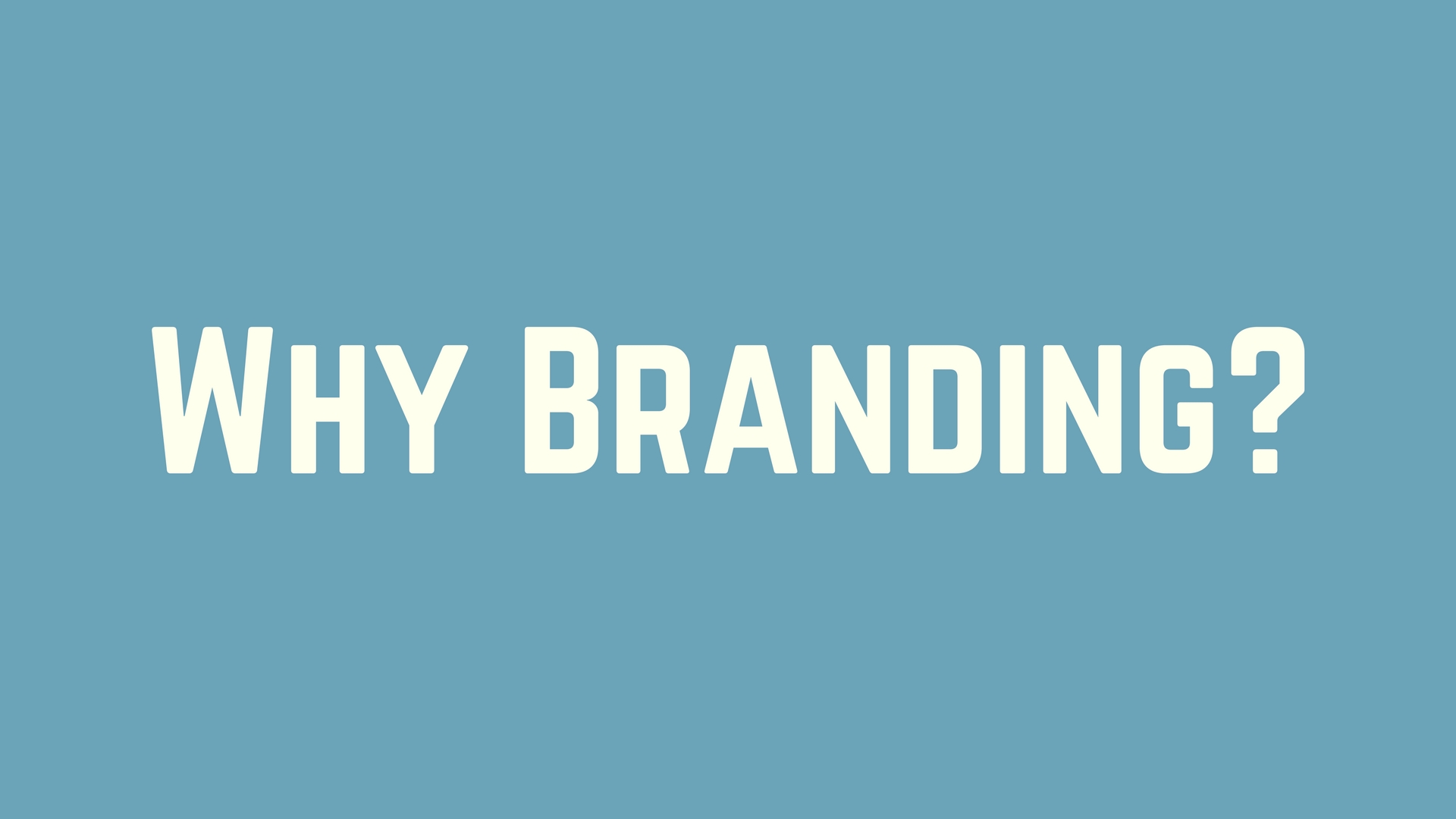Teaching an Old Dog New Tricks – Why Branding Isn’t Just for New Businesses
When starting a new company, building your brand should be at the top of your to-do list. Having a strong brand in your arsenal is crucial to starting at the bottom and moving up the ladder. These new organizations seemingly live at the forefront of the brand development landscape, driving new best practices and rolling out new techniques all the time.
But just because you’re an older organization that came to fruition before strategic brand building was commonplace doesn’t mean you’ve missed the boat. If your brand needs a refresh or a restart, don’t feel as if the latest and greatest branding techniques are only left to the upstarts and newcomers.
There’s no better time than the present to begin engage the appropriate parties and begin the process to bring your brand up to speed with your competition and maximize its ability to drive success.
Without going into too much detail on the brand development process, let’s explore three reasons why branding is important for the established organizations in the business world.
Brand? What’s a brand?
The first reason is that you may not actually have a “brand” in position for your organization. There are a number of reasons why this may be the case, but it’s quite possible your organization has been riding on the success of a particular product or two, making the strength of your organizational brand minimal.
But just because you’ve had success before doesn’t mean you can’t set yourself up for even more success in the future. Diving into building a strategic brand will almost assuredly answer questions you never even thought to ask and take your organizations you never thought you could go. It could be as simple as creating a visual brand that drives a new website design or, for the first time, defining who your target audience is and identifying how to best position your brand for them. No matter what, taking that leap will open new doors for your organization and give you a part of it that will work for you.
No matter when you started the game, everyone is still playing on the same field.
Having an established history and a long list of accomplishments are two things that every business would love to have. But in the day-to-day reality of the marketplace, the memory of today’s consumers can be short, often negating much of the historical advantage of an older brand. What matters is more of right in front of them in that moment – when brands are judged by “what have you done for me lately” and “what do I think of you right now.”
This “right now” mentality puts a heavy emphasis on ensuring that your brand, no matter its age, speaks to consumers as you’d like it to, getting your key differentiation messaging across right away. From names that make sense and connected directly to what your organization offers to logos and visual branding aspects that are aesthetically pleasing and in line with current trends, your brand needs to bring itself up-to-date.
What made sense before may not make sense today.
One of the biggest reasons why organizations are in need of an updated brand is that they’ve simply outgrown the old one, if they even had a “brand” to begin with. When your organization began, maybe you offered two main products, which dominated everything about who you were – your name only spoke to those two, your logo featured them both prominently, your target audience was the market for those two – but now, you’re leaving a lot on the table.
The best brand refreshes and rebrands are able to toe the line between old and new, artfully connecting what made the brand great before with what makes it great today. This is especially true for organizations whose newer offerings are now the star – when they weren’t acknowledged in the brand elements, too much weight was put on them succeeding on their own. They were lone wolves out on the market – quite possibly, the majority of their audience had no idea there was a connection between that product and your brand. So bring them in from the cold and let them bask in the warmth of the overall brand’s strength.
Has your company recently experienced change or growth? Due to changes in business strategies, acquisitions, internal organizational changes or the addition of new products to a portfolio, your brand strategy may need to evolve over time. Click here to download your free copy of “Your Brand’s Guide to Corporate Change” today, and learn how to align your brand and business strategy for success!
How We Answer the Question: "Why Branding?"
I was recently looking through AddisonWhitney.com, and when one of the sliding boxes popped up, what it included caught my eye, talking about who Addison Whitney is and what we do:
“…Helping companies envision their futures – through design, naming, research & brand strategy.”
This phrase stood out to me – and not just because it came from the AW site. The concept of a brand helping to shape a company’s future, along with its ability to put into motion the future they envision, shows the true impact of branding and brand development and drives the case to developing a strong brand.
It’s a question we hear all of the time – “why do I need to create a brand? Why branding?”
To me, the best way to answer this question is with a new question “What is branding?”
Branding is... a researched, thought-out, creative name, one that encapsulates the essence of the brand in verbal form. It’s a name that speaks to the consumer and lets them into what the brand is about while also finding a place in their memory and in their willingness to speak it to others.
Branding is... a logo that jumps out from the competition, and is created with the due diligence required to work on whatever platform it sits. It’s a color palette that keeps your visual brand interesting while also keeping it consistent, building brand equity as consumers walk by and drawing them in with its aesthetically pleasing look.
Branding is... the research behind the decisions made throughout the process. Nothing great is created in a vacuum, and that includes brands. It’s speaking to your target audience to discover that a name candidate you thought would be a home run actually needs some refinement before it can reach its true potential, and finding out what the consumer wants your brand voice to say in order to make the emotional connection necessary to build brand ambassadors.
Branding is... the strategy decisions that drive these elements, creating the road map that will get the brand from nothing to something great. It’s the identification of the target audience, the analysis of the competitive landscape, the positioning and architecture of the brand name and any upcoming brand additions, the brand guidelines that are built to ensure that every usage and interaction of your brand is consistent and powerful.
These reasons, these aspects of branding are why its strong development is so important. Creating and growing any business is a process that can take large amounts of time and energy to achieve – that’s a given. So why not spend some of that time and energy to create something that will work for you even after it is launched?
So go ahead, envision your future. Envision the future you want your company to have – where you want it go and the success you want it to achieve. Then look at it through the lens of what a strong brand can provide. If you do this, then “why branding?” becomes an easy question to answer.
Has your company recently experienced change or growth? Due to changes in business strategies, acquisitions, internal organizational changes or the addition of new products to a portfolio, your brand strategy may need to evolve over time. Click here to download your free copy of “Your Brand’s Guide to Corporate Change” today, and learn how to align your brand and business strategy for success!
Three Questions to Ask When Determining Your Pharma Brand Name Strategy
Today we are excited to have a guest blog from Joshira Maduro, Verbal Branding Associate at Addison Whitney!
By understanding the general buckets of naming strategies and the scenarios in which these types of names thrive, pharmaceutical companies can hone their naming strategy. At the same time, these teams can hedge their risk by including options from different strategies, specifically blank canvas, to avoid the need to start over.
When looking into a naming strategy for your product here are a few questions to consider:
- Is this drug being marketed to patients or doctors?
The answer to this question can help you hone in on your naming direction. Is this drug going to air on TV with commercials that say “ask your doctors about __.”? If so, then creating a marketable story through the name will be vital. In that case, an aspirational “risky” name could be a big payoff if it became memorable enough to stay at the top of the patient’s mind. It will be easier to building a remarkable story behind an emotional name than to try to build brand recognition behind a very scientific, functional name.
Blank canvas options can also work well for patient-facing drugs because they can stand out more: blank canvas names will be unlike anything the patient has heard before, which gives marketers the opportunity to build the story behind the name to be memorable. While the drug itself needs to be effective with proven results, a memorable name and story can cause patients to seek it out proactively. 
On the other hand, if doctors are the primary audience, then a scientific name would tend to yield the best result: the doctor can quickly identify the drug and its indication which will lessen the possibility of confusion. Doctors will not be as interested in a memorable story; they are more concerned about knowing that the drug will work for their patient and that they are prescribing the right medication for them.
- Is this a first-in-class or a “me too” drug?
Often the naming strategy for a drug will depend on the other drugs that are already in the market to treat the same indication. A “first-in-class” drug uses a mechanism of action (MOA) that currently does not exist. For drugs that are first in class, a scientific/functional name can be an excellent way to stand out while also being a safe name. First, in class would mean that there are no competitors in the same space so look alike and sound alike would not present a significant issue.
On the other hand, when the drug has nothing unique regarding MOA, an aspirational name may be the best route to go. By working with a key emotional benefit, the name can find a way to stand out in a crowded space.
- What if my first choice name gets denied by the FDA?
The process of getting the marketing team, product team, and senior level management to agree on a top choice name is already hard enough. But even when they can all agree on the same name, there is still the hurdle of FDA approval to overcome. A thorough screening process can significantly minimize the risk of FDA denial, but there is always the chance that the first choice name gets denied regardless.
To hedge your risk, you need to make sure that there are options for each type on the name in the top 5 list of name candidates: functional, emotional, and blank canvas. In the end, the blank canvas will always be the safest route to go, because it is meant to look like nothing else, but it can be hard to get an entire team on board to adopt a meaningless name.
Risk vs. Reward in Pharmaceutical Brand Naming
Today we are excited to have a guest blog from Joshira Maduro, Verbal Branding Associate at Addison Whitney!
Getting a drug from the lab to the market is an incredibly time consuming and resource consuming task. There are several rounds of clinical trials the drug needs to pass, which only occurs after pre-clinical research. Then there is the approval process, where the regulatory agencies not only check all the related data about the drug to ensure its efficacy and safety for approval, but also review the proposed brand name to ensure it is sufficiently unique from names of drugs already on the market.
In the pharma world there are two factors that regulatory agencies consider “risky”: if looks or sounds too much like a drug already on the market and if the name gives too much of a claim or over-promise.

For instance, a name with the word “cure” in it, or a name that shares its first five letters with another drug already in the market would have a difficult time gaining approval. Companies avoid these risks by going through a rigorous screening process before submitting their final name candidates. The screening and approval process can easily take months, if not a full year, so it’s important to make sure the naming process provides more than enough “safe” options to keep up with launch timelines.
However, sometimes it pays off to take a riskier route, going outside the norm and developing a name that would stand out in a saturated marketplace. These names, if approved, have a high opportunity for easy name recognition, which greatly benefits future marketing efforts.
Generally speaking, brand names fall into three strategic categories – Blank Canvas, Scientific/Functional and Aspirational. They are each defined by the rationale behind the brand name and how it ties back to the product and the overall brand strategy. Additionally, they each carry “safe” and “risky” name characteristics, which must be balanced when creating a name that fits into the category. Here are three main types of brand names, and where they fall in the “safe name” spectrum:
- Blank Canvas: These names tend to have no inherent meaning but aim to sound nice and look intuitive to say. The biggest risk these names face are the lookalike/soundalike comparisons to competitor drugs. In my opinion, these would be the “safest” option in naming.
- Scientific or Functional: A name that leverages letter strings from its generic name or Mechanism of Action would fall into this category. These names can face more risk than blank canvas because there will likely be another competitor already leveraging similar concepts in their name. There is also a danger of having a name that shares too many letters with its generic.
- Aspirational: These are the names that truly look to tell an emotional story. Telling an emotionally impactful story can make the name stand out more to patients, especially if it is a drug in a very crowded space. However, since these types of names have the risk of looking/sounding like a competitor and being a claim, the fall on the riskiest end of the spectrum.
So which of these types of names is the best for your drug? Well, there is no clear-cut answer. Each of these kinds of names has their risk, so there is no truly “safe” option. However, it would take more effort to get a more aspirational name to pass screens and gain FDA approval compared to a blank canvas name. On the flipside, an aspirational name can yield more differentiation in a saturated market compared to a scientific/functional name so that it could be worth the effort.
In the end, where you brand name falls in the spectrum is a case-by-case decision, which is a statement that isn’t as obvious as it sounds. Yes, of course each name development process is different, but often we fall into the trap of looking around and allowing trends or patterns to weigh more heavily on the decisions than they should. Deciding what factors are most important in the long run and sticking to those decisions can give your drug name the best chance of success, both in the approval process and on the market.
A Cup of Sugar and Branding Advice - Two Things You Can Get From Your Neighborhood
What if I told you that organizations and products across the marketplace could take branding advice from a collection of neighborhoods in Nashville?
After the confused looks and wondering if I’ve lost my mind, I’d tell you that these neighborhoods have identified two of the main tenants in branding, and have put the full force of their efforts behind raising the bar within their market.
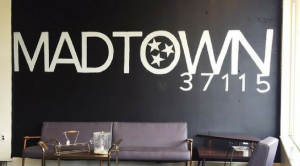 Collectively, the geographic areas involved make up the city of Nashville. Which in of itself is a strong brand and a well-known place. People are proud to identify themselves with the city as a whole and everything it offers. But within Nashville resides a number of smaller, more geographically-focused neighborhoods, each offering its own unique elements and characteristics.
Collectively, the geographic areas involved make up the city of Nashville. Which in of itself is a strong brand and a well-known place. People are proud to identify themselves with the city as a whole and everything it offers. But within Nashville resides a number of smaller, more geographically-focused neighborhoods, each offering its own unique elements and characteristics.
In line with a recent trend in demographic identity, the residents of these areas are beginning to attach their neighborhood with their own personal brand. In doing so, they have hit a sweet spot in branding, having achieved two foundational achievements in building a successful brand.
First, they’ve established strong brand identity, one that is built on its own characteristics while at the same time creating emotional connections with their audience. There is a natural, built-in connection with one’s home and local area, and to create a brand built on this gives the neighborhood instant brand ambassadors.
Willing to stake their own personal identity on their neighborhood brand, these residents boost its strength and increase the differentiation of the brand amongst its peers. As Nashville designer Tim Park said, “"I think the people here are so dang proud of their neighborhoods that they want to shout it to the rooftops.”
Brands everywhere can often only dream of possessing such loyalty and enthusiasm, where their audience not only relates internally, but invests their own effort to help spread the brand outside of its initial reach.
Additionally, these brands have eased the ability to spread the brand through well-thought-out, creative names and logos. In addition to all of the well-established reasons why a visual and verbal brand is vital for success, these elements serve as a resource for the aforementioned brand ambassadors. They may have all the enthusiasm in the world to spread the brand, but the addition of tangible brand elements makes it that much easier.
These neighborhood names and logos serve another purpose as well – they all highlight what makes the area unique. They serve as conversation starters and sources of information that further increase the presence of the brand.
For instance, the logo for the Hillsboro-West End neighborhood in Nashville showcases well-known landmarks within its borders. Visitors viewing the logo for the first time are immediately 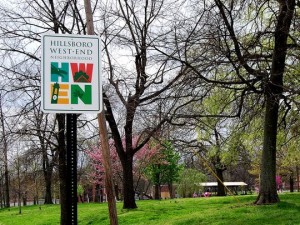 informed that the neighborhood boasts a number of famous places of interest, while also establishing where in the city the neighborhood resides, an important piece of information for any place.
informed that the neighborhood boasts a number of famous places of interest, while also establishing where in the city the neighborhood resides, an important piece of information for any place.
This is a lesson that can be transferred into a number of branding spaces. When creating a new name or logo, look at what makes your brand stand out – how can these two elements tell the story of your brand? Don’t waste the opportunity and create a name or logo where the connection has to be explained to the audience.
So the next time someone says that their brand was influenced by a place called “Madtown” or a logo showcasing a prominent street sign, take their word for it. They might just be on to something.
Learn more about building your best brand portfolio strategy by downloading this FREE webinar, "Identifying The Opportunities In Your Brand Portfolio - Are You Capitalizing On Every Potential Business Opportunity Your Portfolio Provides?"
Finding the Connection: How a Brand Name Can Help Tie Your Brand Together
Congratulations, you’re a parent! Bringing to life a pristine new entity created from scratch, it’s your brand. And like all things birthed into magnificence and destined to prosper, it needs a name.
Unfortunately, what you might be coming to realize is there’s no baby book to scour or great-grandparent to take after when shaping the signature alias of your newborn brand. The world is at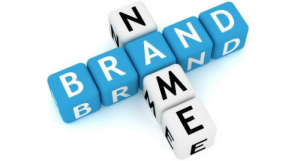 your fingertips, and you might just want to coin a term that is cool and memorable. But when namer’s block kicks in and you are staring at a trash can full of crumpled papers of fizzled ideas, it’s probably because you’re brainstorming too broadly.
your fingertips, and you might just want to coin a term that is cool and memorable. But when namer’s block kicks in and you are staring at a trash can full of crumpled papers of fizzled ideas, it’s probably because you’re brainstorming too broadly.
There’s a seemingly infinite and daunting list of combinations in lettering and verbiage to craft your brands name if you wander into the process unintentionally. The alphabet is long and the dictionary is thick - you’ll be doodling for decades if your only filtering criterion is sounding “cool”. Your jump-off point needs be refined and specific, and it can start with your brand attributes.
Sounds redundant right? Use qualities of something to name it - how original! But, hear me out.
The mere fact that brand names can (and often do) have some connection back to the product, service or organization they represent is often unknown to their audiences. For instance, Aldi derives from the German word for discount. Durex was made to be a mashup between “durable, reliable, excellence”. Nike was the name of the Greek goddess of victory. These brand attributes were transformed into the names that the audience knows and loves.
These connections, however indirect, are a powerful example of branding. At the surface, a brand name is the biggest single brand representation out there, often living as the first impression and the aspect that is most likely to ingrain itself in the memory of the consumer. Because of this, any additional tie back to your product that can be evoked from the name provides an additional boost to the brand equity, in such that if the name becomes commonplace on the market, the connection will become more obvious, boosting the ease of memory for your brand.
 Additionally, creating a name with a connection shows a sense of purpose in your brand development. Respect is given to brands who are seen as well-thought-out and deliberate, as opposed to brands that come out of nowhere and look to have little background work given before hitting the market. If you can show that your brand name went through an extensive process and was developed by experts within the branding space, it shows the audience the importance given to the brand. They will then feel more confident connection the quality of the brand work with the quality of the overall brand product or organization.
Additionally, creating a name with a connection shows a sense of purpose in your brand development. Respect is given to brands who are seen as well-thought-out and deliberate, as opposed to brands that come out of nowhere and look to have little background work given before hitting the market. If you can show that your brand name went through an extensive process and was developed by experts within the branding space, it shows the audience the importance given to the brand. They will then feel more confident connection the quality of the brand work with the quality of the overall brand product or organization.
It is likely that customers will be oblivious to your uniquely crafted backstory, and that is okay. You will join the club of countless brands whose name and logos have narratives that people will never read. But the end result will be a unique sound and a better understanding of all that makes your newborn so special. Welcome to the world!
Image Sources:
Image 1
Image 2
3 Things to Consider when Taking Your Brand Name Global
Most organizations are looking for their brand to grow throughout its lifetime, and for some, that anticipated (and hoped for) growth includes expanding outside of their home region or country. However, this growth can come with a downside for the brand if certain aspects, specifically the brand name, aren’t suited to travel. Everything is going well – the brand is growing, new markets are identified, the stage is set for an initial foray into the global market – until the brand name falls flat once it leaves the home market.
So how does a brand ensure its success both locally and globally? Here are three areas of consideration to take into account when creating a brand name that will be used on a global scale:
- Legal: Make sure your brand is legally able to extend outside of your current market and that you won’t run into legal opposition using your brand name in another region or country. For instance, a local business could use parts of the brand name of a larger company, which wouldn’t cause too many problems until they tried to go national or global. Then they would almost certainly face opposition from the larger organization, which would result in time and costs spent in working out any issues that arise. Additionally, there could be parts of a brand name that pose no legal issues in the originating country, but when expanding to other nations face differing laws.
- Linguistics: Be conscious of how the brand name translates in other languages. More times that most would think, one or more words in a brand name translate very poorly into the language of a potential new market – everything from profanities to translations that don’t bode well for the business or product involved.Don’t wait until you see the negative reaction or end up on a “worst name mistakes” list to properly do the research necessary to avoid this problem. Also, keep in mind that knowing exactly where a brand might grow is rare – in this case, it’s definitely better to be safe than sorry and research the linguistic aspect of a potential brand name in as many languages as possible.
- Growth/Expandability: Once you expand, consider the impact on the business. Ideally the business will grow and you need to make sure the brand name isn’t so limiting that it impedes this progress.
Just like any aspect of a brand, a name carries valuable weight with an audience. Often, it is the first interaction they have with the overall brand, so as the brand grows, so does the potential audience. This also increases the importance of a high-quality brand name – one that will have the same impact whether it is known to 100 people or 100 million.
Creating a global-friendly brand name shouldn’t come as an afterthought or be consigned to a reactive strategy. When developing a brand name, work under the assumption that there exists a real possibility that it will be utilized on a global scale. That way, you can avoid hoping your established brand will have success when it expands beyond its current borders and find a new, global audience.
Learn more about building your best brand by downloading this FREE webinar, "Identifying The Opportunities In Your Brand Portfolio - Are You Capitalizing On Every Potential Business Opportunity Your Portfolio Provides?"
The Importance of Branding on a Community
The State University of New York at Buffalo, the largest public university in the state, has gone through a number of branding iterations in the past few years. In an effort to focus their branding efforts to highlight what makes the university standout, the brand focus has alternated between highlighting the school’s Buffalo home and putting at the forefront its place among the universities in the state and the name recognition that accompanies “New York.”
After a number of years splashing “New York” across everything from athletic fields and uniforms to marketing materials and websites, a change in brand strategy has reversed course back to focusing on Buffalo as the school’s main point of emphasis.
Outside of the conversation that could be had about brand consistency and the importance of identifying a solid direction across all areas of the institution, one point that this back-and-forth has emphasized is how branding, especially place-name-focused branding, impacts the community in which the brand resides.
In this situation, one of the driving forces behind the change back to commonly using “University at Buffalo” and putting the city name up front was to better connect the university with the community, and to allow Buffalo residents to have the university as a point of civic pride, instead of feeling as if they shared its success with the entire state.
Institutions in which the branding includes a place name often include this perspective in their branding efforts. Communities are built on commonality, and place-focused brands provide that on a large scale. The most prominent examples of these are sports franchises, where the name is front and center and which serve as a uniting force for their home bases.
Consideration should exist across the brand portfolio, starting with the name. Although it can seem a minor part of the process, choosing which specific city, state, town or region to use in the brand name can have far-reaching impacts.
The Carolina Panthers football team, whose home stadium and business operations all reside in Charlotte, North Carolina, decided early on in their branding process their goal to become a regional mainstay, a “team for both Carolinas” (completely with a logo that is shaped similarly to the outline of both states together) and not limit themselves to one city or state.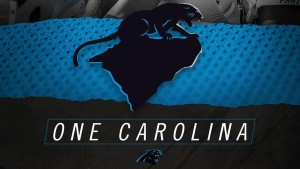
This expansion of the brand identification to an entire region has been paramount in the brand strategy, especially as the team made its way to the most recent Super Bowl and promoted a "One Carolina" marketing campaign, looking to further enhance its uniting powers within the region.
On the other side, trying to cast too wide a brand net can alienate your local audience and be seen as putting their community on the back burner in the eyes of the brand. This is yet another example where research, information-gathering and a sense of awareness to the state of mind around you is the most important aspect of brand development. Knowing the importance of local buy-in and the best way to ensure a connection with the brand can save time and money down the road, and also give your brand a head start in its drive to success.
Image Source 1
Image Source 2
Image Source 3
Keeping the “Brand” in “Brand Name”
“The whole is greater than the sum of its parts.”
Wise words that touch on so many topics, and while it’s unclear whether Aristotle had brand name development and brand strategy on his mind when he uttered this well-known refrain, he definitely struck gold on a key point in a brand’s lifecycle.
Creating a brand name is an integral part of any branding effort, since the end result will become one of the most visible and widely used aspects of a brand. But its place of importance should not lead to a misguided sense of separation in the development process, where the name is created in a vacuum, far removed from the various brand elements that will surround and support it.
“When creating a new brand name, you should always acknowledge the bigger picture,” says Brittany Scott, Manager of Verbal Branding at Addison Whitney. “Think about where you are now and where you want your brand to be in five or 10 years. Think about other brands in your space and how you want to position yourself against them.
“Your brand should be flexible enough to encompass your current market position as well as allow for growth and expansion. Names that are too limiting may face challenges in the future as your market and market share evolves.”
Too narrow of a creative mindset can result in a name choice that will hinder a brand for the foreseeable future, causing even more speed bumps when an inevitable rebrand takes place. So now, instead of gaining positive and long-lasting brand equity with the help of the brand name, you are faced with an uphill climb of time, money and effort to redo the process.
Even if the name initially fits and begins to lay the foundation to a successful brand, quality brand strategy ensures you are always looking ahead and preparing for the long-term future.
Think of brand development as a jigsaw puzzle. Each element of your brand – name, logo, strategy, etc. – is a different puzzle piece that must fit cohesively with the others while also moving the process forward to a completed picture. It doesn’t make sense to solve a jigsaw puzzle by first working on a different, unrelated puzzle. When a brand is created a vacuum, without the road map of a full brand strategy, this is exactly what you are doing. Avoid this detrimental (and potentially costly) pitfall by laying a strong foundation and creating a brand name that can represent your product or service now and in the future.
Another factor that plays into this strategic direction is, as Scott mentions, the impossibility of creating a brand that makes everyone happy about everything involved.
“There will always be differing opinions of your brand, but a strong brand message, backed up with a solid product or service, will demand respect in the marketplace.”
Let’s assume the name you create is met with a higher-than-expected level of dislike. Well, if it is floated out to the market without the brand life jacket to keep it afloat, it could take the entire brand down with it. But if the name was created within the whole of the brand, then it will be backed up and possess the support necessary to withstand any growing pains or unfavorable opinions.
Addison Whitney's quarterly newsletter, Forward, is bursting with branding news and insights - and we love to share what we know! Sign up here.
How Important is an Easily Pronounced Brand Name? [Infographic]
We all know them. The brands where the name has sounded one way as long as you can remember until one day, you are blindsided by the suggestion of a different pronunciation of the same brand.
In the below infographic from Made by Oomph! examines some of these famous brand names who wear the mark of commonly mispronounced. Whether it be the incorrect dropping of a vowel or the addition of an extra syllable, these brands have been fighting the pronunciation battle for years, which varying levels of success.
For some brands, the difficultly or ambiguity of their name stands as a quasi-badge of honor for their status as “luxury” or “exclusive” brands. This mindset is driven by the notion that if someone can’t pronounce the name correctly, then they are seemingly out of the loop and aren’t the target market for that brand. While this may seem like an over-confident point of view, it has driven many in their quest to join the upper echelon of perceived brands.
This list also goes to show how important multi-lingual research can be when developing a brand name. These brands possess names that fit ideally in their native language, but when they want to take their branding efforts global they run into a world of issues with their name pronunciation in the various local cultures.
It is one of the most prominent issues when local brands expand either unexpectedly or too suddenly, and they face a catch-22 with their name. On one hand, their brand equity is such that a total rebrand would be impractical. But on the other hand, when they look to enter markets where their established name is unknown and unusual, they run the risk of establishing their brand under a mispronounced moniker.
Additionally, one key takeaway here is the importance of a well-rounded brand. A strong, easily-recognized logo can offset much of the expected damage that comes with a difficult name. Additionally, a brand strategy that is built upon aspects that lie outside of the name strength are also more capable of establishing a strong brand while still correcting people on how to say their name.

